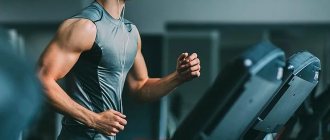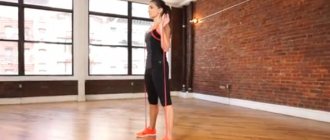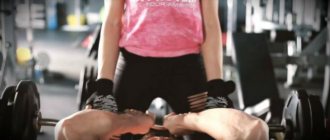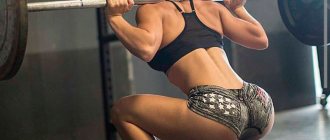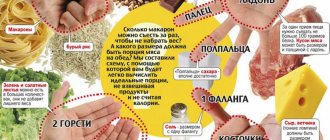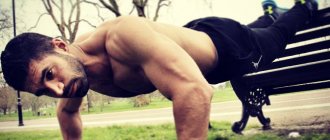( 2 ratings, average: 5.00 out of 5)
Home » Training principles
The Sheiko program is a specially designed training plan that takes into account the general loads and capabilities of the human body.
By drawing up such instructions and explaining why this is so, a person understands what to do and how to allocate his time. This applies not only to training, but also to the rest of the day. Therefore, it included recommendations from powerlifters who worked and became ZMS during the Soviet Union.
Bench press during the preparatory period
In the first week, athletes should not try too hard. The training plan should include bench press, squats and upper muscle work. The intensity of loads and work must be reduced to the minimum possible.
The muscles will get used to it, and serious work will begin. The Sheiko bench press during the preparatory period only involves gaining weight and the necessary vitamins, microelements and other components. They will provide mass, strength and quality of exercise.
In the second week, abdominal exercises, deadlifts and work with the latissimus muscles are added. You can slowly start working on your triceps, hip extensions, and dips.
It is important to understand that you should not rush into the pool headlong, because if you pull a muscle, a person will not be able to exercise at all. Then the entire result will be lost altogether.
Basic moments
The bench press for amateurs is a rather difficult exercise and often dangerous. Therefore, it is necessary to take into account several important nuances:
- The position of your arms and back simply will not allow you to remove the projectile even with minimal weight; for this you need an assistant who can provide backup.
- With the right actions, your legs will get tired at the very beginning, because they serve as a support.
- The upper limbs should never be fully straightened.
- Do not turn your head, your eyes should look at the center of the bar.
- Don’t forget about breathing; as you exhale, the bar rises, and as you inhale, it lowers.
- Lower the projectile quite slowly, and at the lowest point make a short pause of two seconds.
Bench press for athletes
Since these people are constantly working on themselves, they do not need a preparatory period. For kms and ms in general, it will be necessary to create certain conditions when the loads seem much more serious. Therefore, the Sheiko powerlifting training program is based on basic rules. They include two serious components. Firstly, this is the athlete’s adaptive reserve.
It is the ability to bear loads and the ability to relax muscles. This is explained by the presence of experience and the ability to relax well. After several years of work, the adaptation mode acquires truly iron nerves and becomes a serious basis for achieving high achievements.
To gain unprecedented strength, the Sheiko program suggests starting with the development of a nutritional regimen and the correct arrangement of workouts during the day. That is, everything is compared with the study of one’s own metabolism for further action. Afterwards, the doctor prescribes sports supplements and determines the required level of pharmacology. It is under no circumstances recommended to do this on your own.
Secondly, this is the ability to use cycling factors correctly. Here it is important not only to be able to work on weight, but also to dose the intensity of the exercises. Moreover, it’s better to start with the number of repetitions and determining the loads. This applies to all exercises and even entire complexes. Cycling directly concerns only those athletes who are preparing for competitions.
For ordinary cases of strength work, something simpler will do. But, individual exercise and the presence of growth needs will be the key factor in creating your own cyclicality. Then it’s easier to develop it and monitor the emergence of new results.
Sheiko system press
This system is a strength training scheme with a certain volume and load, designed for thirteen weeks. It should be noted that it is very tough and you need to sensibly assess your capabilities and strengths. It’s not for nothing that Boris Ivanovich Sheiko’s program is called for those who like to plow. But it’s worth it, if you manage to pass it, and for this you have enough willpower, patience and physical training, then the results will increase by thirty%, guaranteed.
You should start training with a weight of about 150 - 175 kilograms, as with a bench press of one hundred kg. efficiency will be insufficient.
To begin with, it is better to undergo it in a period of 4 to 8 weeks, so as not to put stress on the joints and ligaments. And after finishing, you should rest for a week or two to allow your body to recover. There is also no doubt that during this cycle you need to take supplements and increase your intake of carbohydrates and proteins, as well as get more rest and strictly adhere to the regime. Otherwise, you will simply waste time and health without achieving even the slightest results.
Whether you are an amateur or a professional, the main thing is to find for yourself a system or program that is completely suitable. Even if you work out without a trainer or a regimen designed specifically for you, you can choose the most useful one. Since they are usually made up of athletes who have achieved enormous heights, and that is why there are no absolutely useless and ineffective systems.
Preparation for performances
The important thing to remember here is the required minimums. First you have to calculate everything for three months. Rest on Tuesday and Thursday. For warming up, a weight equal to half the working weight is suitable. Everything is calculated only from real results.
Fast pumping
A special feature of this section in the Sheiko training program is the presence of lead-in exercises. They resemble the main ones, but are reduced in the number of repetitions and loads.
It resembles a kind of ladder, which does not allow you to overestimate your capabilities. This applies to beginners and those who have not visited the gym for a long time.
Hard hardcore
This means, of course, working hard to overcome the impossible. This is especially true for arresters and kms. After all, they are at the peak of their form, and they want to become even more perfect. You can work out in the gym three to four times a week.
The exercises should be distributed as follows. On the first day, the emphasis is on squats. Press no more than once. Afterwards rest, but be active. That is, a light jog or walk. It’s even better to combine it with a visit to the pool, bathhouse, sauna. After the lesson they are escorted in this order. Emphasis on the bench press. Traction between sets.
At the end of the week, repetitions increase to 6 times. The warm-up involves a weight that reaches 60% of the working weight. It is important to remember to write a plan and create a menu. Monitoring your diet will ensure normal condition and rest for the entire body.
Part 1
The bench press has never been my strongest movement.
I don't know why that is. Perhaps the problem is in the peculiarities of my physique, perhaps the mistakes of the early period of my training are affecting me. But the fact remains that the bench press is my Achilles heel. While a number of guys who started training later than me were catching up and even surpassing me in the bench press, I was plodding along at a snail’s pace. Squatting and deadlifting under 300, all I could achieve in the bench press was 155 kilograms in training without a bench shirt and 170 kilograms in a shirt, shown at the Bryansk Region Cup in 1999. And this is with a body weight of 94 kilograms. In 2000, I became acquainted with the method of Boris Ivanovich Sheiko. It then began to be published in the magazines “Olympus” and “World of Power”. Initially, it simply shocked me with its seemingly unrealistically huge volumes. Just think, up to eight workouts a week. Two bench press and squat workouts per session. And all this not in one or two approaches, but in five to seven. Plus a utility room. There was reason, as they say, to faint.
I didn’t faint, but started to figure it out. After all, in addition to the shock, this technique was still attractive. And it was attractive primarily because it was a system, built from beginning to top on uniform principles. That is why beginners, masters, and the elite “Sheiko-style” train in essentially the same way. The whole difference is in the volume of load. Secondly, the system is strictly focused on results in eventing, unlike many (especially American) systems, in which sometimes you don’t understand who they were written for: an eventer or a bodybuilder.
So, I decided to try it. Before this, I didn’t train for a year because I had health problems and my blood pressure started to rise. For the same reason, I can’t train deadlifts and squats. But the bench press goes without problems. Here, as they say, God himself ordered to try to break through his weakness with the help of Boris Ivanovich.
I started in May 2001. After a couple of weeks of introductory training, I completed the penetration. I benched 140 kilos without a shirt. This result became the starting point in my experiment. My own weight at that moment was about 92 kilograms. I calculated the loads, and I took training for masters and masters as a basis. Since I work in a 24/7 mode, I built my training cycles not by weeks, but by the number of workouts. Thus, my cycle consisted of four workouts, after which a new one began.
Let me say right away that I am a supporter of quality training. Therefore, I always press cleanly: without chops, bridges, etc. tricks. And even in warm-up approaches I press with pauses on the chest. I believe that what goes around in training comes around (reap) in competition.
I trained without “chemistry” and even without any additives. Still, I still had some mistrust in Sheiko’s method. I didn’t “catch up” with how you train for two months with almost the same weights and at the end you should increase the result. Therefore, every two weeks I increased the training weights by five kilograms.
After two months, I estimated that I had already benched 150. The weight remained almost the same - 93 kilograms. Then he continued to train in the same manner. After about a month, I started to feel pressured. I had to resort to a well-known Russian folk remedy - methane. A short course for two weeks allowed me not to fall into overtraining, to complete the program and, in mid-September, to estimate a new record - 162.5 kilograms, again without a T-shirt.
During this period, I already made several conclusions for myself using Boris Ivanovich’s method. First of all, I removed from the fourth workout any triceps exercises that Sheiko does. After my triceps workout, the next bench press workout, the pressure completely disappeared. Although I did not train the triceps extremely, a maximum of three sets of 8-10 times with moderate weight.
In the fourth workout, Boris Ivanovich, as a rule, plans to press movements. On this day I did the same bench press only with a low load of 65-70%. In general, Sheiko often plans exercises that are performed once or twice in a monthly cycle. As he says, for a change. This doesn't suit me. Therefore, I tried to do all the auxiliary exercises at least once per microcycle, and preferably twice, without any options. This suits me better, this way I better feel the impact of the exercise. In the back room, I also deviated from Boris Ivanovich’s standards and did almost all the exercises not in five, but in three approaches. But in the bench press, I tried to withstand all the loads proposed by Sheiko in accordance with the methodology.
Having tried the system, I decided to train seriously, hoping to return to the competitive platform again, especially since the regional bench press championship was coming up in two months. I calculated the workload for two months - preparatory and competitive. Basic working weights - i.e. 80% started at 135 kilograms. And each cycle I added five kilograms. Thus, by the end of the month I was already working with 150 kilograms and, based on an estimate without a shirt, I confidently benched 170 kilograms. A little later I made a pass and in the shirt (HD) - 180 went like nothing.
During this period, “pharma” was already in full swing in preparation (where would we be without it). The scheme was as follows: once a week an ampoule of Primobolan, twice a week an ampoule of Winstrol, and for background, one to three tabs of methane “wave”. The only supplements I used were amino acids and vitamins.
According to calculations, I should have lifted at least 185-187.5 kilograms at the competitions. Alas, just on the day of the competition, grief befell us all; our coach, a wonderful man Volodka Vinnikov, died. It is clear that there was no time for competitions.
After all this, I rested for a month and when I appeared in the gym at the end of December, interesting things began to happen. I immediately made an estimate and didn’t believe it - I benched 160 kilograms. Usually, after long breaks, my results drop off quite dramatically, but here I was about ten kilograms short of my best result. It seems that two theses are justified: “Primo” and “Vini” really hold the result well, and the potential gained on the Sheiko system also allows you to do this. Inspired, I’m starting a new program. I took as a basis the training that Boris Ivanovich described for Ruslan Vostrikov (the bench press part, of course). Its peculiarity is that it allows a smooth transition into the load - you start working with 75% weights, and by the end of the cycle the load increases both in volume and intensity up to 90%.
My working (80%) weight then was 145 kilograms. Didn't take any supplements. During the development of this program, I was convinced once again that enthusiasm is a good thing, but if it is in moderation. At first I was carried away. I added utility parts and my body immediately went on strike, my shoulders and elbows began to ache. So I had to make adjustments along the way and, thank God, I was smart enough not to persist and relieve the load, first of all through the help. In the bench press, I tried to keep the load constant. Despite the body’s protests, the work went on, all the planned approaches and repetitions were worked out, and in the last week of the cycle I even added a five and was already working with 150 kilograms like three months before under chemistry. I guess I calmly bench pressed 170 without a shirt. In short, it was cool. Probably intoxicated by such progress, I still fell into stupidity. Completing the program with a short competitive cycle, I did not resort to pharmacological support (although it was necessary, I should have done it the way I did it in the summer) and (hey!) I also increased the load - I began to work with 155 kilograms. The most interesting thing is that I still worked out the program completely, but in the end I simply pushed myself. At pass 175 I pressed, but how hard it was for me, how clumsy. The conclusions from everything are obvious. I had to get out of overtraining. Rest for ten days, reduce the load and crawl up and forward again and again.
Spring and summer passed in experiments. I even trained in triathlon for a month, but alas, my blood pressure began to rise again. Apparently deadlifts and squats are no longer for me, which is a pity.
I tried programs with the inclusion of auxiliary bench press exercises in separate workouts, it worked out well, but in my case the microcycle itself was too extended, up to 10 days, which is not always convenient.
And in general, I seem to have found a program that should work more or less optimally. I started working on it on September 9th. My weight at that time was 94 kilograms. For the preparatory cycle I took a six-week program for CCM and MS, and for the competitive cycle I took a competitive cycle for the same category. All this was supposed to allow us to prepare for the regional bench press championship, which was planned for the end of November. The goal was to squeeze 200 kg in a “weave”. I started getting chemicals right away. A bottle of nandrolone per week, every other day an ampoule of Winstrol. Starting from October, two to four tablets of methane every other day according to an intermittent schedule, in November one to three tablets in a heap according to the usual cycle. Supplements include only vitamins and amino acids.
I started with a working weight of 150 kilograms. At first it was a little heavy, but then I got the hang of it, and after three weeks I raised the weight to 160 kilograms. I kept them until the end of the preparatory cycle. At the end of it, I made an estimate. In the HD jersey I bench pressed 195 with a slight skew. And, apparently, everything went as it should.
In the competitive cycle, I moved a little away from the programs described by Boris Ivanovich. Namely: I added load in terms of intensity. Once per microcycle, I pressed 90% of the weight for one rep for 4 sets, 85% for two reps, and 80% for three reps. The fourth workout was easy - 70-75%. Naturally, I slightly reduced the volumes both in the bench press itself and in the accessory, and continued to gradually increase the weight. In short, at this time I trained like never before. Things went swimmingly. There were movements that seemed to have frozen forever. For example, in the standing press the best result before was 80 kg for two reps. And here I did a hundred bench presses for three in five approaches. I did lying flyes with 50 kg dumbbells. I did push-ups on parallel bars with 70 kilograms on a 5x5 belt. Accordingly, the bench press broke through. 180 presses calmly for one time in four approaches. The only problem was that my bench shirt tore during one of the workouts.
This is what my program itself looked like: Workout 1 1. Press (according to the scheme) 2. Horizontal rowing (rowing) - 3x8-10 3. Press from the racks 85-90% x 2-4 times in different workouts. 4. Lying dumbbell fly - 3x8-10
Workout 2
1.Press - (pyramid - only in the preparatory cycle - according to the scheme) 2.Standing press - 5x3
Workout 3.
1.Press (according to the diagram) 2.Horizontal rows on a block - 3x8-10 3.Push-ups on parallel bars - 5x4-6 4.Lying dumbbell flyes - 3x8-10
Workout 4.
1. Press (varies in different weeks, but light - 65% - 4x6, or 70% - 5x5 or 75% - 5x3. 2. Biceps curl 3x6-8 3. Standing press 5x4-5
I did pull-downs and biceps curls more for balance in muscle development and to give the pressing muscles a chance to rest. This area can be squats or deadlifts. I consider bench presses an important exercise, especially if you bench press in a shirt at competitions. I remember an old incident. When I bought my first bench shirt, I benched 130 kilograms without it. But in the shirt I only benched 140, although I was hoping for more. Having figured out how the shirt works, I began to include push-ups in my training and literally after three or four workouts I had already bench-pressed 150 kilograms. So since then, push-ups have been a constant exercise in my pressing programs.
As I wrote above, in classic Sheiko programs there is usually no bench press in the fourth workout; they use pressing movements - dips, incline presses, etc. I completely abandoned this practice. For me personally, turning them on once per microcycle is irrational and does not work. Turn it on twice - either you need to stretch the cycle itself, or train more often, and I can’t afford that either (life is not just about sports, after all). So in the fourth workout I just do light bench presses.
I still didn’t do five sets of flyes, although Boris Ivanovich pays special attention to the development of the pectoral muscles. I believe that in a competitive bench press, priority should be given not to the pectoral muscles, but to the triceps. The pecs are already automatically strengthened by the press shirt, but the triceps in this situation are in the least advantageous position. So three sets of lifts and twice a week is quite enough. In the competition cycle, I did the same thing, only I removed one approach in all exercises, including the bench press. But as I said above, having reduced the volume, I added intensity.
What came of all this? I tore my shirt, but the executive secretary of our federation, Andrei Moiseenko, helped me out and brought his size 54 dog to the competition. A little big, of course, but it was better than nothing. I stepped onto the platform with a combat weight of 99.5 kilograms. Since I didn’t lift in Andreeva’s T-shirt, I started cautiously – with 180 kilograms. Then I pressed 190 and in the third I already began to think about winning and therefore went not for 200, as I wanted, but for 195 and made the right decision.
The main opponent, Sergei Zolozhkov, bench pressed 200 without a pause; his attempt (even though he was the owner of the platform) was not counted. So I became the first. At 200 I “passed” in the fourth approach, but alas they didn’t go, I was tired (I haven’t competed in tea for three years), and even if the shirt was tougher, the “kopeck piece” would have been mine for sure. However, I am already pleased with what happened as a result of my experiment with Sheiko’s programs. The main thing is that I found a system that allows me to really progress. So 200 kilograms, I’m sure, will be mine.
What conclusions did I draw from my experiment with the Sheiko technique? Firstly, the technique really works and this is the main thing. It is incorrect to attribute all the progress to taking “pharma”; I had taken “pharma” before, but at the same time, it was still so hard to train, especially before competitions. According to Sheiko’s method, the competition cycle went like a walk, no strain, no strain. After training, I practically didn’t feel tired. Secondly, working according to the method perfectly improves technique. To be honest, at the competition I don’t remember lifting the barbell at all, I didn’t feel the bench press at all, as I always did in training. Nevertheless, all attempts went smoothly, without a hitch. But I have such a vile “bitch”. On large scales, the right hand often lags behind and the press is skewed. And there is not a hint of distortion here.
The “trick” here is that Sheiko training does not go to the limit when you think about how to LIFT the barbell first, but there is no time to think about HOW TO LIFT it. Here there is always the opportunity, even in the approach itself, to look for the optimal option for lifting the barbell. Moreover, during training there are from 30 to 60 such lifts. And there are four such trainings per week. So the skill is consolidated very well.
I consider the assertions that according to Sheiko’s method you can only “break down” to be unfounded. Let's first figure out what it means to “break down”? It's either get injured or overtrain. But the main factor in “breakdowns” is, first of all, intensity, working with extreme, failure weights. Then yes, all thoughts are on throwing the hardware upstairs, ignoring both the technology and all safety measures. And if it’s like this all the time, day after day, week after week - then that’s it - the psyche can’t stand it, the body malfunctions, there is overtraining and injuries.
Sheiko’s work is not at its limit; if the weights are calculated correctly, without self-confident show-offs, I think it is simply impossible to break. Especially if you use at least moderate “farm”. And of course you shouldn’t copy the training of the elite. Even Sheiko's aces train differently. The same Lugovaya trains only four times a week as an ordinary CCM. So it's better for her.
If injuries occur, you need to look for the cause elsewhere: errors in technique, incorrect equipment, ignoring warm-up, etc. For a year and a half of training according to Boris Ivanovich’s methods, I did not have a single serious injury. Yes, there were little things, but they didn’t derail me from the plan, they healed along the way and didn’t interfere with my training. And they did not arise from loads. For example, I once pulled a muscle on my back under my shoulder blade. And all because I tried to remove the barbell from the racks myself, but my partner would have helped and everything would have been fine. During the entire experiment, I had one case of overtraining, as I wrote about above. But this happened due to my own stupidity, due to a violation of one of the basic rules of increasing the load: if you increase the volume, reduce the intensity and vice versa. And if you still want to do both, ensure adequate recovery, including through “pharma.” In the last training cycle I did just that and the result exceeded all my expectations.
Sheiko’s methods, no matter how good they are, cannot be taken literally. We are all different, we work out in different gyms, we live differently. So his methods can and should be adapted to suit yourself, especially in the utility room. Many people are shocked by having to squat or bench press twice in a workout. I didn't find anything wrong with this. And he squatted, and even more so he pressed. The advantages of this are described above (see about the technique).
It’s not just me who has benefited from B.I. Sheiko’s technique. Our coach Andrei Ermachenko successfully uses it in our club. He went from 150 kilograms to 192.5 kilograms, and quite quickly. Andrey used this technique in the training of our strongest bench presser Sergei Vlaznev. A couple of years ago, his bench press stopped at around 180 kilograms. Training according to Sheiko for three months allowed Sergei to lift 205 kilograms in the category up to 75 kg at the Russian Bench Press Championship in 2001. Then Seryoga began to work out in his own way again, and a year later his result increased by only five kilograms. And if he had continued to work according to Boris Ivanovich’s method, I’m sure that he would have pressed very, very hard.
To summarize, I can say that Sheiko’s method, of course, is not the “sole and infallible teaching” (like communism), but I personally have no doubt that this method is one of the best today. One thing upsets me - I can’t verify its effectiveness in all powerlifting movements. I hope someone else does it. I myself will continue to train “according to Sheiko”; I have some more ideas on how to get the most out of this technique.
Features of the Sheiko bench press program
To understand how this method differs from the others, it is necessary to evaluate it from the right point of view. The physiological meaning of compliance with all requirements and rules will come first here. Then even exhausting exercises will not create the preconditions for overwork. And lifting with heavy weights will develop muscles efficiently and without unnecessary problems.
Also serious features include strict dosage of loads. If a minimum amount of exercise is required, then it is taken into account and worked out. For the maximum, there is an intermediate rest.
Even 2 workouts per week are allowed and restrictions for people with an ectomorph body type. A special feature for arresters will be the presence of bench presses and hyperextensions. They are necessary for the development of strength in the ligaments and rest between repetitions.
To pump your chest more effectively, you need to use different types of exercise equipment. Bench press horizontally on a bench, tilt the body down, head raised. In this case, the result is guaranteed in 100% of cases.
Technique
First, the athlete is required to lie down correctly. The shoulder blades are pulled back and lowered. In powerlifting slang this is called a “lifting bridge.” It ensures technicality in every approach, even if a person is new to the world of weightlifting. All subsequent flyes, chest presses, finishing exercises and other exercises are performed only this way.
If you move your shoulders towards your head, your biceps and triceps begin to work. Moreover, the anterior ligaments on the shoulders will not be an exception. The grip is selected wide, but only based on the general height reading. The bar is only Olympic. Its weight is 25 kg.
The legs are moved back a little and supported. At first, your lower back will hurt, so you need something to support it. For example: a sheet, a pillow or even a yoga mat. The bar should be at eye level. A partner delivers the barbell. It should be lowered just below the nipples. At the exit of the squeeze, it should be parallel to the Adam’s apple line.
Compliance with these simple rules is necessary to achieve the desired result. The press technique according to the Sheiko program is an integral part of the overall work. Such concepts are taken from a book called “Powerlifting.” It is designed for athletes and experienced athletes. With its help, preparation for competitions is carried out in 2.5 months.



